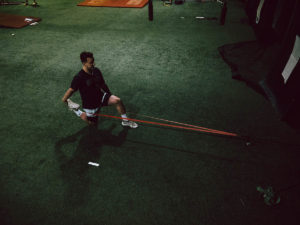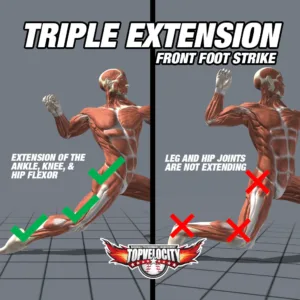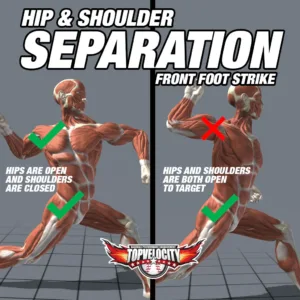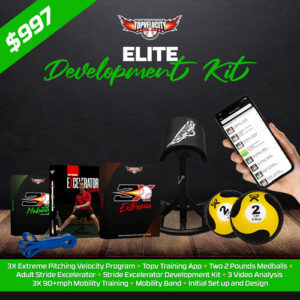 Mobility and pitching mechanics are fundamental to the success of any pitcher. The ability to move freely and efficiently is crucial in executing proper pitching mechanics, which directly impacts a pitcher’s performance on the mound. This article explores the intricate relationship between a pitcher's mobility and their mechanics, providing comprehensive strategies and exercises to enhance performance.
Mobility and pitching mechanics are fundamental to the success of any pitcher. The ability to move freely and efficiently is crucial in executing proper pitching mechanics, which directly impacts a pitcher’s performance on the mound. This article explores the intricate relationship between a pitcher's mobility and their mechanics, providing comprehensive strategies and exercises to enhance performance.
When we talk about pitching mechanics, we're referring to the sequence of movements and body positions a pitcher goes through to deliver a pitch. Each phase, from the windup to the release, requires precise coordination and control. Mobility, on the other hand, encompasses the range of motion within the joints and the flexibility of the muscles, which are essential for these movements to be smooth and effective.
Improving mobility can have a profound impact on a pitcher's mechanics. Enhanced flexibility and joint range of motion allow pitchers to achieve better body positions, generate more power, and reduce the risk of injury. This is particularly important given the physical demands of pitching, which can place significant stress on the shoulder, elbow, and lower body.
Throughout this article, we will delve into various aspects of mobility and pitching mechanics, offering detailed insights and practical advice. From understanding the basic components of effective pitching mechanics to integrating advanced mobility techniques, we'll cover everything you need to know to take your pitching to the next level. Whether you're an aspiring pitcher aiming to refine your skills or an experienced player looking to gain a competitive edge, the strategies outlined here will help you improve your performance and longevity in the game.
By the end of this comprehensive guide, you'll have a deeper understanding of how mobility and mechanics work together and be equipped with the knowledge to implement effective training routines. So, let’s get started on this journey to becoming a more proficient and resilient pitcher.
The Importance of Mobility in Pitching: Mobility & Pitching Mechanics
 Mobility is crucial for pitchers, as it allows for a greater range of motion, leading to more effective and efficient movements. In the high-stakes world of baseball, every detail counts, and mobility can be a game-changer. Here's why it's so important:
Mobility is crucial for pitchers, as it allows for a greater range of motion, leading to more effective and efficient movements. In the high-stakes world of baseball, every detail counts, and mobility can be a game-changer. Here's why it's so important:
Enhanced Range of Motion: Mobility & Pitching Mechanics
A pitcher's ability to move through a full range of motion in the joints—particularly in the shoulders, hips, and spine—is essential for executing proper pitching mechanics. When a pitcher has good mobility, they can achieve optimal body positions that maximize leverage and force production. This is especially important during the windup and delivery phases of pitching, where precise movements are required to generate speed and accuracy.
Power Generation: Mobility & Pitching Mechanics
Power in pitching doesn't just come from arm strength; it comes from the entire body working in unison. Mobility in the lower body allows pitchers to create a strong, stable base, enabling powerful leg drive. When combined with a flexible and mobile torso, this leg drive translates into rotational power, which is crucial for increasing pitch velocity. A mobile pitcher can more effectively transfer energy from the ground up through the kinetic chain, resulting in a more powerful throw.
Improved Control and Accuracy
Control and accuracy are vital for any successful pitcher. Mobility enhances a pitcher's ability to consistently repeat their mechanics, which is key to maintaining control over the ball. Tight muscles and restricted joints can lead to compensatory movements and mechanical flaws, causing inconsistency in pitch location. By improving mobility, pitchers can achieve smoother, more repeatable motions, leading to better command of their pitches.
Injury Prevention
Pitching places a tremendous amount of stress on the body, particularly on the shoulder and elbow. Poor mobility can exacerbate this stress, leading to overuse injuries and mechanical breakdowns. For instance, limited shoulder mobility can force a pitcher to compensate with improper arm angles, increasing the risk of rotator cuff injuries. Similarly, tight hip flexors can hinder the pitching motion, putting extra strain on the lower back. Regular mobility training helps maintain the health and integrity of these critical joints and muscles, reducing the likelihood of injuries and prolonging a pitcher's career.
Recovery and Longevity
Improved mobility not only enhances performance but also aids in recovery. Muscles and joints that move freely recover more quickly from the repetitive stresses of pitching. This is crucial for maintaining a high level of performance throughout a long season and can contribute to a pitcher's overall longevity in the sport. Effective mobility exercises can help reduce muscle soreness, prevent stiffness, and keep the body in peak condition.
Comprehensive Athleticism
Pitchers are athletes, and like any athlete, they benefit from being well-rounded in their physical abilities. Mobility contributes to overall athleticism, enhancing balance, coordination, and agility. These attributes are not only important for pitching but also for fielding and reacting to plays. A mobile pitcher can more easily adjust their body to make quick defensive plays, contributing to their overall effectiveness on the field.
In conclusion, mobility is a foundational aspect of pitching that influences power, control, injury prevention, recovery, and overall athleticism. By prioritizing mobility training, pitchers can unlock their full potential and enjoy a more successful and sustainable career in baseball.
Understanding Pitching Mechanics: Mobility & Pitching Mechanics
 Pitching mechanics are the biomechanical movements that enable a pitcher to throw a baseball effectively. Proper mechanics involve the coordination of various body parts to maximize velocity, accuracy, and efficiency. Understanding these mechanics is essential for any pitcher looking to enhance their performance and reduce the risk of injury.
Pitching mechanics are the biomechanical movements that enable a pitcher to throw a baseball effectively. Proper mechanics involve the coordination of various body parts to maximize velocity, accuracy, and efficiency. Understanding these mechanics is essential for any pitcher looking to enhance their performance and reduce the risk of injury.
Lift Leg Momentum
The lift leg plays a crucial role in a pitcher's delivery. It serves two main purposes: closing off the hips towards the target and assisting gravity to add momentum to the stride. The lift leg should work in tandem with the drive leg to generate momentum and drive torque through the stride phase. Many young pitchers lack the leg strength to drive their body using the drive leg alone, so they often swing the lift leg to generate momentum. However, this approach can cause the pitcher to open up early, reducing core torque and overall effectiveness. Proper use of the lift leg is essential for building the momentum needed for a powerful pitch without compromising the mechanics.
The "Load"
The "load" phase is where the legs do most of the work, a component often challenging for young pitchers. This phase involves driving the hips and aligning the Force Vector (the angle from the drive leg ankle to the knee) with the front hip. Proper leg and core strength are crucial here; without it, achieving optimal hip drive and Force Vector alignment becomes difficult. Leading with the front hip and ensuring the Force Vector is directed towards the target are critical for developing the core torque needed at front foot strike. When pitchers fail to implement this phase effectively, they often struggle to generate the necessary torque, impacting their overall performance. Training drills, like the sled drill, can help pitchers improve their load phase.
Triple Extension (3X) & Separation
Triple Extension, a cornerstone of 3X Pitching, involves the simultaneous extension of the ankle, knee, and hip flexor before the front foot strike. Mastering this component is essential for creating significant hip-to-shoulder separation, which is vital for generating power and increasing pitching velocity. When a pitcher achieves Triple Extension effectively, the subsequent components of the delivery occur more smoothly and efficiently. Consistent practice of this phase, as emphasized in the 3X Pitching Velocity Program, leads to substantial improvements in pitch speed and overall mechanics.
Chest Thrust & External Rotation
Chest thrust and external rotation depend on the successful execution of previous components, as they create the core torque necessary for launching the chest and shoulders towards the target. This phase involves the arm being relaxed and in a cocked position, allowing the core torque to transfer into shoulder torque. As the pitcher stabilizes the front leg and releases the built-up energy, the chest thrusts forward, and the shoulders rotate externally, positioning the body for maximum velocity. Achieving this component requires a solid foundation in the earlier phases, ensuring that the body is in the best position to deliver a powerful pitch.
Internal Rotation & Elbow Extension
In this phase, the arm moves into its final release position through rapid internal rotation and elbow extension. It's crucial not to pull the arm or head down during this motion, as doing so shifts the pivot point and reduces velocity. The arm should accelerate to its peak speed naturally, without forced additional speed at this late stage. Maintaining a stable head position, often by tucking the chin, helps prevent instability and ensures a consistent release point. Proper execution of this component leads to a more controlled and powerful pitch, minimizing the risk of injury.
Stabilization
Stabilization is critical and occurs at front foot strike. It involves extending the force vector of the landing leg in line with the back of the hip. The force vector is the line from the ankle to the knee, and proper alignment prevents the landing leg knee from pushing past the heel, ensuring stability and balance. Strong leg muscles are necessary to fully extend the landing leg at the release point, which contributes to pitching velocity and precision. Many young pitchers struggle with this phase due to inadequate leg strength, highlighting the importance of targeted strength training in a pitcher's regimen.
The Importance of Proper Pitching Mechanics: Mobility & Pitching Mechanics
 A sound kinetic chain is paramount in good pitching mechanics. Any weak link in this chain can cause a loss of energy early in the throwing motion, leading to increased stress on the distal segments to achieve the desired pitch velocity. It's crucial to distinguish between poor mechanics and pathomechanics. Poor mechanics are errors that reduce pitch effectiveness, while pathomechanics are errors that reduce pitch efficiency or increase injury risk.
A sound kinetic chain is paramount in good pitching mechanics. Any weak link in this chain can cause a loss of energy early in the throwing motion, leading to increased stress on the distal segments to achieve the desired pitch velocity. It's crucial to distinguish between poor mechanics and pathomechanics. Poor mechanics are errors that reduce pitch effectiveness, while pathomechanics are errors that reduce pitch efficiency or increase injury risk.
Common Flaws in the Windup Phase
The most common flaws in the windup phase often stem from poor hip and core control at peak knee height during single-limb support. These flaws manifest in three primary ways:
- Trendelenburg Stance: The pitcher falls into a Trendelenburg stance.
- Posterior Trunk Lean: The pitcher assumes a posterior trunk lean over the drive leg.
- Premature Forward Momentum: The pitcher initiates forward momentum toward the target too early.
These errors indicate an unstable base of support (BOS). Failure to achieve a stable BOS during the windup results in significant loss of kinetic energy from the lower extremities and places greater demands on the distal segments to achieve desired pitch velocity.
Issues with Stride Length and Duration
A stride length of less than 75% of body height and a stride duration exceeding 1.05 seconds are indicative of a poor push off the rubber or minimal force production through the lower kinetic chain. Research suggests that a pitcher has approximately 1 second (0.95–1.05 seconds) to transition from the first forward movement in the windup to Stride Foot Contact (SFC). If these initial phases are not completed within this timeframe, subsequent events are likely to fall out of sequence, resulting in decreased performance and increased injury risk.
Upper Extremity Mechanics
In the upper extremity, failing to maintain a “hand-on-top” position leads to delayed glenohumeral abduction and early external rotation, causing the pitcher to be "late" in their delivery. This delay is associated with arm hyperangulation, poor pitch accuracy, and increased medial elbow valgus load.
Stride Foot Contact and Pathomechanics
Improper stride foot placement can compromise both pitch effectiveness and efficiency. An excessively closed stride foot position may affect accuracy by forcing the pitcher to throw across the body, while an excessively open foot position can place increased demands on the abdominal muscles, anterior shoulder complex, and medial elbow.
Stride knee flexion angle correlates with shoulder and elbow torques. As pitchers age, they often develop increased stride knee flexion as an adaptive mechanism for maintaining high-velocity pitching.
Early Trunk Rotation
Early trunk rotation, or "opening up," is a common error that leads to suboptimal utilization of the stretch-shortening cycle (SSC) through the obliques, resulting in greater stresses on the distal kinetic chain and increased HIRT. Improper sequencing or timing of the hips and trunk also negatively impacts pitch velocity and command.
Focus on Early Phases of Throwing
Special attention to the early phases of throwing is crucial, as the windup and stride phases are the most important for identifying and addressing mechanical flaws. Errors in these phases disrupt appropriate pitching timing, are the most detrimental to pitch efficiency, and place the greatest stress on the throwing arm. Fortunately, these errors are the most identifiable and correctable early in the pitch cycle, often eliminating issues later in the delivery.
By understanding and correcting these common mechanical flaws, pitchers can improve their performance, increase their efficiency, and reduce the risk of injury. Proper pitching mechanics are essential for achieving the desired outcomes on the mound while maintaining the health and longevity of the pitcher's arm.
How Mobility Affects Pitching Performance: Mobility & Pitching Mechanics
 Hip and ankle mobility are important variables in ball velocity and pitching performance. Hip mobility, measured by passive hip internal rotation (IR) and external rotation (ER), and ankle mobility, measured by passive ankle dorsiflexion (PAD), are significant contributors. A study examining the relationship between these mobility indices and pitching performance in collegiate baseball pitchers provides insightful data.
Hip and ankle mobility are important variables in ball velocity and pitching performance. Hip mobility, measured by passive hip internal rotation (IR) and external rotation (ER), and ankle mobility, measured by passive ankle dorsiflexion (PAD), are significant contributors. A study examining the relationship between these mobility indices and pitching performance in collegiate baseball pitchers provides insightful data.
Study Overview: Mobility & Pitching Mechanics
Ten collegiate baseball pitchers, aged 20 ± 2 years, with an average height of 72.5 ± 3.6 inches and weight of 199.1 ± 35 pounds, participated in this study. The study aimed to correlate their hip and ankle mobility with their maximum pitched ball velocity (BV) and their coaches' ratings of their pitching performance (CR).
Methodology: Mobility & Pitching Mechanics
Before the assessment session, each athlete performed a series of static stretches. During the session, the athletes' height, weight, IR, ER, and PAD were recorded. The day before, BV was determined from the average velocity of the fastest three pitches from a bullpen session of 25 fastball readings, using a Stalker Pro radar gun. The average BV was 87.7 ± 4.6 mph.
Mobility Measurements
- Internal Rotation (IR): Measured by having the athlete lie face down on an assessment table with the knee flexed to 90 degrees. The femur was passively moved into internal rotation, and the degrees of movement were measured with a goniometer.
- External Rotation (ER): Similar to IR, but the femur was moved into external rotation.
- Passive Ankle Dorsiflexion (PAD): Conducted using a tape measure placed perpendicular to the wall. With shoes removed, athletes placed their knee against the wall while sliding the heel away. The distance from the posterior side of the heel to the wall was measured and normalized to the athlete's height.
Coach Ratings and Performance Correlation
Coaches provided a CR of the athletes' pitching performance on a standardized 10-point scale (10 being superior, 1 being inferior). The study found moderate strength correlations between CR and non-dominant PAD (ρ=0.36) and dominant IR (ρ=0.33). Similarly, moderate correlations were found between BV and non-dominant PAD (r=0.46), dominant IR (r=0.50), and non-dominant IR (r=0.47).
Analysis of Findings
- Non-Dominant PAD: Higher non-dominant PAD correlated with increased BV, likely because a greater range of motion in the ankle creates more torque, enhancing force coupling at the end of the pitching delivery.
- Dominant IR: Higher dominant IR correlated with increased BV. Increased internal rotation of the dominant hip may enhance the load on the drive leg, leading to greater torque and a more powerful stride.
- Non-Dominant IR: Higher non-dominant IR also correlated with increased BV. This increased range of motion likely contributes to more torque and rotational momentum when the front leg is planted during the pitch's completion.
Implications for Pitching Performance
The study highlights the significant role of hip and ankle mobility in pitching performance. While these mobility indices show a moderate correlation with maximum pitch velocity, they are not as strongly correlated with the coach’s rating of pitching performance. This suggests that other factors also play a crucial role in a pitcher's overall effectiveness and efficiency.
Conclusion: Mobility & Pitching Mechanics
The relationship between mobility and pitching performance is complex and multifaceted. Improved hip and ankle mobility can contribute to higher pitch velocity by enhancing torque and force production. However, pitching performance is also influenced by a range of other factors, including strength, technique, and overall conditioning. By focusing on enhancing mobility alongside other training components, pitchers can achieve better performance and reduce the risk of injury.
Enhance Mobility & Pitching Mechanics
 Step into the realm of high-performance baseball with the Top Velocity Elite Development Kit, specifically tailored for athletes aged 13 and up. Developed by Brent Pourciau, a former professional pitcher and renowned expert in baseball coaching, this kit is designed to elevate your abilities beyond the ordinary and enhance your pitching performance through improved mobility.
Step into the realm of high-performance baseball with the Top Velocity Elite Development Kit, specifically tailored for athletes aged 13 and up. Developed by Brent Pourciau, a former professional pitcher and renowned expert in baseball coaching, this kit is designed to elevate your abilities beyond the ordinary and enhance your pitching performance through improved mobility.
What's Included:
- 3X Extreme Pitching Velocity Program: This elite program is designed to skyrocket pitching velocity. It's an intense, comprehensive training regime that challenges athletes to break through their limits, perfectly suited for the developing physiology of older players.
- Top Velocity Pro Training App: Upgrade your training experience with our advanced app, featuring sophisticated drills, immediate feedback, and progress tracking. This digital coach keeps you motivated and on track towards your pitching goals.
- 2 Pro-Grade Medicine Balls: Essential for building powerhouse core strength and enhancing your throwing dynamics, these medicine balls are specifically designed for serious athletes striving for peak performance.
- Adult Stride Excelerator: Fine-tune your pitching technique with this state-of-the-art tool. It's engineered to perfect your stride, a vital aspect of pitching, making the learning process both effective and engaging.
- 3X Elite Mobility Training: Gain access to elite-level mobility routines that are the key to unlocking 90+ mph pitches. This scientific approach maximizes your kinetic chain and unleashes your natural pitching potential.
- High-Performance Mobility Band: Critical for injury prevention, this band is tailored to improve flexibility and mobility. It guides athletes through essential stretching exercises, vital for reaching higher athletic milestones.
- Stride Excelerator Development Kit: Advance your stride development with this kit, focusing on increasing stride length and strength. It lays the groundwork for future success in high-level pitching.
- Professional Video Analysis (3 Sessions): Benefit from detailed feedback provided by the Top Velocity experts. Submit your pitching videos for in-depth analysis, focusing on refining your technique and identifying improvement areas.
- Customized Setup and Strategy: Starting off on the right foot is key. Our kit includes a personalized setup, aligning with your unique goals and objectives, marking the beginning of your journey to excellence.
Why Choose the Top Velocity Elite Development Kit?
This is not just an assortment of training tools; it's a scientifically-backed path to elite baseball performance. Inspired by Brent Pourciau's personal journey and created from the perspective of sports science specialists, it brings together advanced training methodologies tailored for ambitious athletes.
The Top Velocity Elite Development Kit for ages 13 and up is a pledge to cultivate superior talent, focusing on enhancing natural abilities while significantly minimizing the risk of injuries. By improving your mobility, you can maximize your pitching performance and unlock your full potential.
Embark on a journey to redefine baseball training and elevate Top Velocity as the epitome of evidence-based training and excellence. Order your Top Velocity Elite Development Kit today and begin an exceptional journey towards baseball supremacy.




